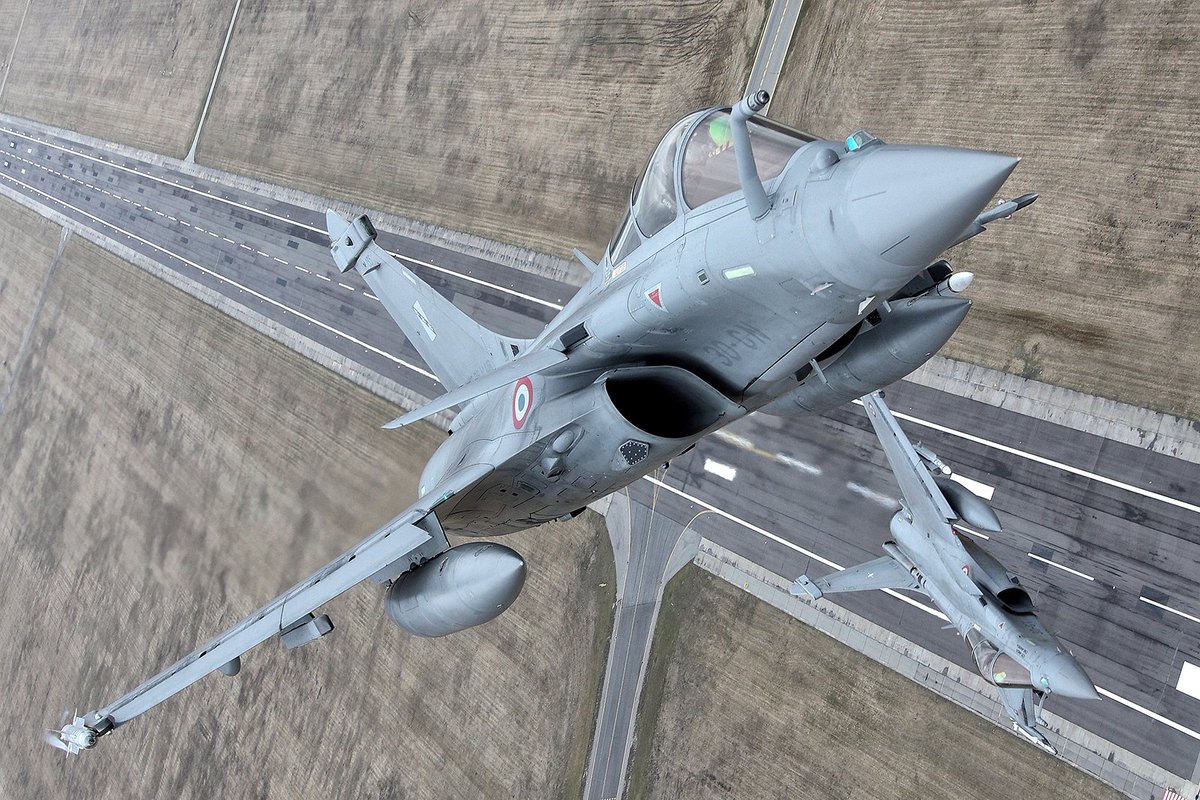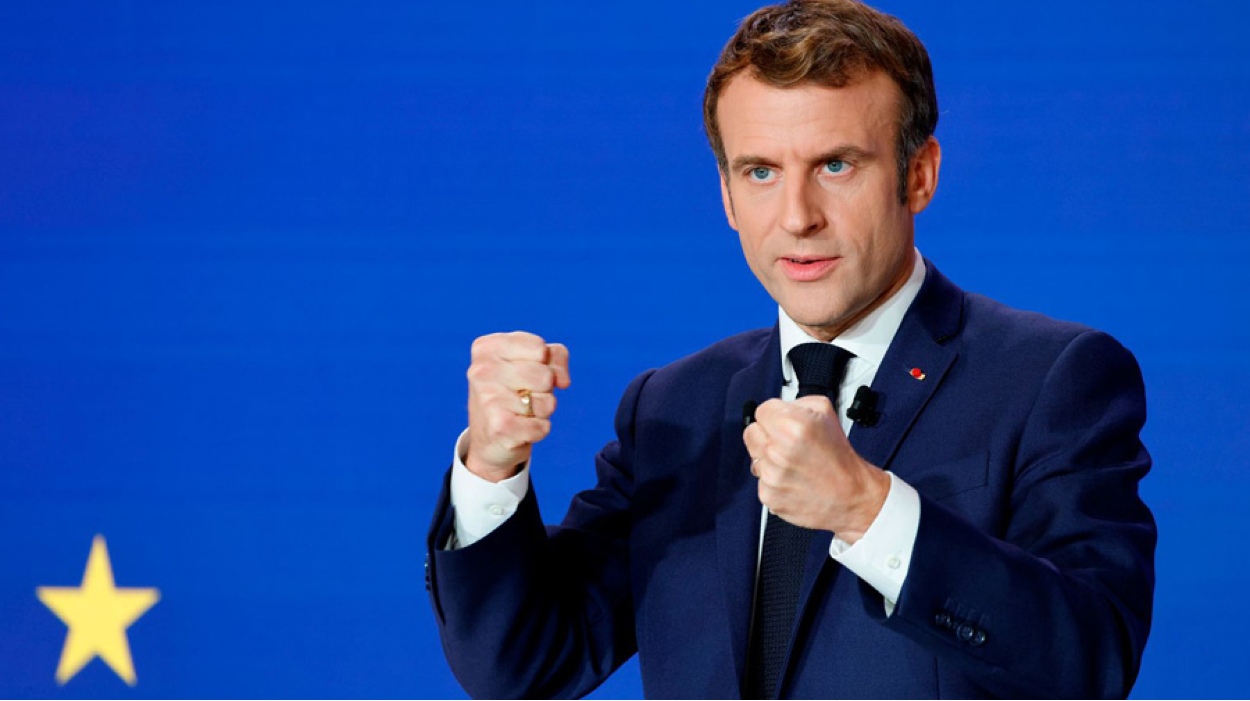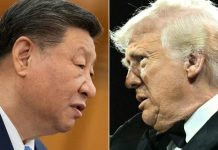In a war economy saddled with a burgeoning demand for arms domestically, Russian arms exports have taken a massive hit. The vacuum left by Russia, however, has been filled by a European country that was looking to expand arms sales: France.
Adding insult to injury, the British Ministry of Defense (MoD) published a video on March 21 showcasing the fall in Russian arms exports in the wake of the Ukraine war. The UK MoD wrote on Platform X: “Amidst the pressures of war, Russia has slipped down the rankings of top defense exporters.”
Based on the report published by the Stockholm International Peace Research Institute (SIPRI) on global arms transfers, the video begins by stressing that Russia has registered a 53% decline in global arms transfers since 2019. Additionally, only 12 countries received Russian arms in 2023, as compared to the 31 that received arms in 2019.
“The decline is likely due to Russia prioritizing equipment for operations in Ukraine and reduced customer demand due to underwhelming performance on the battlefield,” it wrote on Platform X.
Under the shadow of Moscow’s full-scale invasion of Ukraine and the international sanctions that followed, Russian arms shipments have decreased drastically. As per SIPRI data, China, Egypt, and India accounted for the three biggest recipients of Russian weapons between 2019 and 2023. However, there was a sharp decline in the quantity of equipment these countries purchased from Russia in 2023.
https://twitter.com/DefenceHQ/status/1770850411508809755
“Between the two periods, Russian arms exports to India decreased by 34%, while exports to China decreased by 39% and to Egypt by 54%. Algeria and Vietnam, which were Russia’s third and fourth-largest recipients in 2014-18, saw their exports drop by 83% and 91%,” respectively, SIPRI analysts wrote.
Although Russia has reaffirmed that its arms transfers were progressing steadily, the figures suggest a precipitous decline. One of the most glaring examples of Russia’s inability to deliver arms as per schedule was seen in Armenia, which eventually led to the Caucasian country decoupling from its long-standing ally and diversifying its arms imports.
Reports published in Indian media regularly speculate that the delivery of the S-400 air defense system may have been delayed owing to the war.
Despite hostilities raging in Ukraine, Russia has managed to pitch its cutting-edge arms at nearly every international air show and exhibit. However, its preoccupation with the Ukraine war and a visible decline in arms production caused by international sanctions on crucial electronic components has triggered global suspicion.
Several countries that have traditionally bought their arms from Russia have announced that they are expanding their arms purchases beyond Moscow and creating infrastructure locally to further indigenization.
The steep fall in Russian arms exports, however, has come as an opportunity for the United States and France. Pieter Wezeman, a senior researcher at SIPRI, said that the sanctions related to Moscow’s brutal war on Ukraine appear “to have further contributed to the increase in French arms exports.”
France Dethrones Russia; Rafales Topple Su-35s
According to SIPRI data, France became the world’s second-largest exporter of heavy armaments from 2019 to 2023.
In 2019–23, France managed to surpass Russia to take the second position in the world rankings for major arms exports. Rising by 47% between 2014–18 and 2019–23, French arms exports accounted for 11% of all arms transfers during this time.
Between 2019 and 2023, France supplied major armaments to 64 states, which was significantly more than Russia. The international sanction regime on Russia has made buyers of Russian arms change course and turn to France for Rafales.
The rise in French defense exports is mainly attributable to the sale of Dassault Rafale fighter jets. Significant agreements for Dassault Aviation’s Rafale fighter plane with countries including Qatar, Egypt, and India have contributed to France’s ascent up the rankings.
Russian fighter jets, helicopters, and tanks have made up the bulk of its arms exports to friendly countries. However, that is beginning to change. From 2014 to 2018, France exported 23 Rafales. This grew to 94 between 2019 and 2023, or slightly less than 31% of French weaponry exports during that time. As of the end of 2023, 193 further Rafales were ordered for export.

Indonesia canceled its plan to purchase Sukhoi Su-35 aircraft from Russia owing to the possibility of U.S. sanctions over Moscow’s conflict in Ukraine. Instead, it inked contracts for six Rafales in September 2022 and another 18 in August 2023.
Similarly, Russia was in talks with the United Arab Emirates (UAE) for the sale of a Su-35S fighter jet, with officials expressing optimism for a possible deal until a few years ago. However, Riyadh signed an agreement with Dassault Aviation to buy 80 Rafale F4 jets, the latest variant of the 4.5-generation fighter aircraft.
Likewise, despite being ardent buyers of Russian arms, Egypt also took a different course when it signed up for French Rafale jets over Russian Su-35. The Su-35s meant for Cairo have since been earmarked for delivery to Iran.
Besides Rafale, there has been a surge in the sale of combat vessels in France. According to SIPRI data, France raised its export of military ships and armaments to equip them by 14% between 2014–18 and 2019–23.
Research by EurAsian Times found significant interest in French submarine manufacturing even though the contract for manufacturing submarines for Australia fell through when Canberra joined AUKUS.
The French rise in exports has been enabled by a Russian fall and busting of its arms production. Russian arms shipments in 2019 were roughly the same as they were in each of the 20 years prior.
Nonetheless, export quantities were substantially lower in 2020, 2021, and 2022 than they were in 2019, and they were 52% lower in 2023 than they were in 2022.
While 31 states obtained significant armaments from Russia in 2019, just 14 did so in 2022, and that number dropped to 12 in 2023. This further illustrates Russia’s diminishing influence as a worldwide arms supplier.
The bulk of France’s arms exports in 2019–23 went to states in Asia and Oceania (42 percent of arms exports) and the Middle East (34 percent).
However, states in Asia and Oceania received 68 percent of total Russian arms exports in 2019–23, while Middle Eastern and African states received 13 percent and 10 percent, respectively. Just under two-thirds of Russian arms exports went to three states in 2019–23: India (34 percent), China (21 percent), and Egypt (7.5 percent).
As per the report, selected major arms on order or preselected for future orders (delivery after 2023) show a major contrast between France and Russian orders. As compared to 223 combat aircraft ordered from France, only 78 were ordered from Russia; as opposed to 20 major warships ordered from France, there were only eight ordered from Russia; against 498 armored vehicles sold by France, there was an abysmal eight sold by Russia. Russia, however, has managed to sell more than 16 surface-to-air missile systems against just two sold by France.

However, the difference becomes stark when geopolitical realities are put into perspective. A seasoned Russian ally, Armenia, withdrew from Russia and instead placed orders for French arms, including radars and armored vehicles. Detailed coverage can be read here.
There is another Russian ally that France has managed to court in a big way. India is the biggest arms importer in the world. Russia and France together account for 36% and 33% of the country’s imports, respectively. Notably, this is the first five-year period since the 1960s where Russia or the Soviet Union do not account for more than half of the country’s purchases.
The SIPRI report said, “India was also the largest recipient of Russian arms in 2014–18, but exports to India decreased by 34 percent between 2014–18 and 2019–23.”
France has made swift inroads into India with Rafales and Scorpenes on offer. In January, the two nations promised to strengthen their defense industry ties following France’s sale of 26 Rafale Marine fighter planes and three Scorpène-class naval submarines to New Delhi last summer.
Since the early 2010s, China and India’s efforts to increase their domestic armament production, along with earlier Western sanctions packages meant to dissuade third countries from buying Russian weapons, have contributed to the Russian arms export industry’s decline in global competitiveness.
These problems have been made worse by Russia’s invasion of Ukraine in February 2022 and the sanctions that followed. These measures have put a burden on Russia’s defense production capacity, damaged Russian arms’ reputation, and made it more difficult for the Kremlin’s current clients to make payments. Russia’s dependability is also similarly being questioned as it struggles to fulfill its commitment to its allies to sell armaments.
This has been a blessing in disguise for France which has been on a spree to expand its global influence. The timing of the SIPRI report also augurs well for Paris at this point since it has taken the lead to arm Ukraine against Russia and strengthened the pitch to send its troops to fight in Kyiv, which has drawn both applause and criticism for the French President Emanuel Macron.
- Contact the author at sakshi.tiwari9555 (at) gmail.com
- Follow EurAsian Times on Google News




